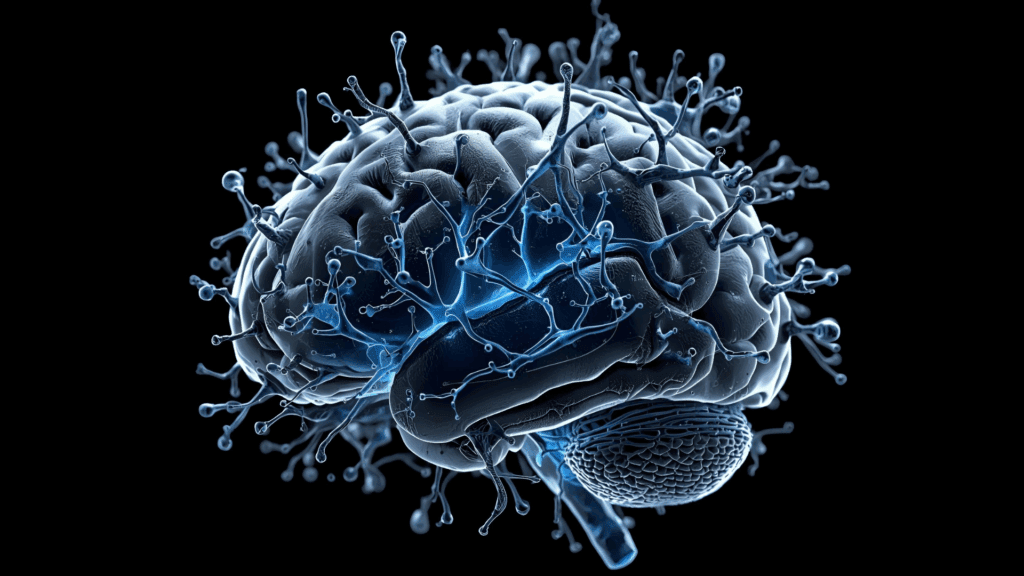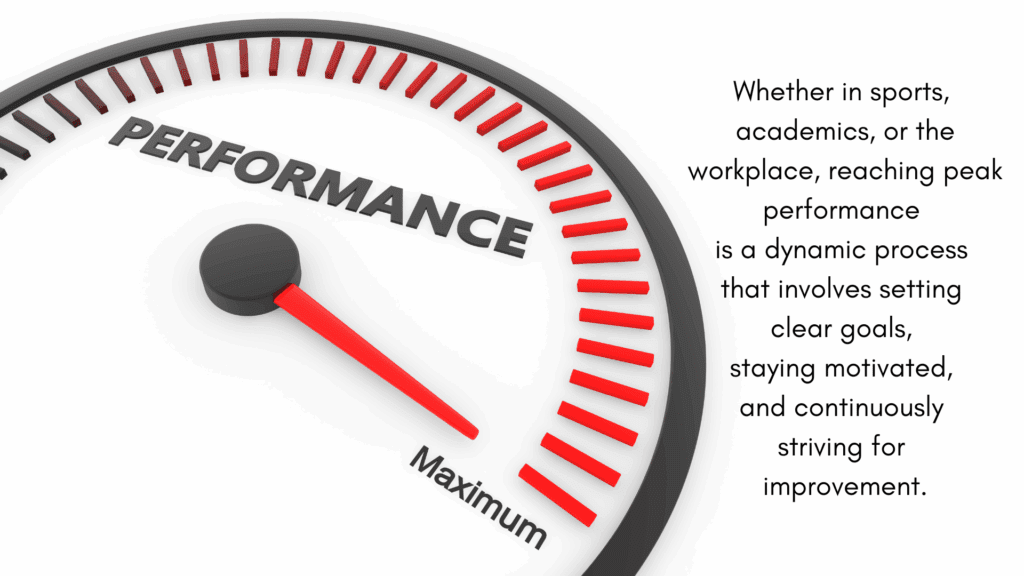Understanding the Neuroscience of Performance Coaching
The neuroscience of performance coaching represents a transformative shift in how professionals, executives, and high achievers optimize their cognitive and emotional capabilities. Traditional coaching has long relied on behavioral frameworks, psychological principles, and motivational strategies, all valuable, but fundamentally limited by their inability to target the neural mechanisms underlying performance. The neuroscience of performance coaching changes this equation entirely by applying evidence-based neurobiological principles to directly enhance the brain systems responsible for decision-making, sustained focus, emotional resilience, and consistent high-level achievement.
The distinction is measurable and profound. When coaches ground their practice in neuroscience, they stop relying on external motivation and instead activate the brain’s intrinsic systems for peak performance. Understanding how the prefrontal cortex orchestrates executive function, how dopamine regulates motivation and goal-pursuit, how neuroplasticity allows the brain to physically reorganize itself, and how the amygdala’s threat response either amplifies or undermines decision-making gives coaches the ability to produce faster, deeper, and infinitely more durable results.
The neuroscience of performance coaching isn’t speculative; it’s grounded in peer-reviewed research from major institutions, neuroimaging studies, and organizational outcomes data demonstrating that neuroscience-informed coaching produces 22% increases in work performance and 40% improvements in goal attainment compared to traditional approaches.
Understanding the Neuroscience of Performance Coaching
Neuroscience of performance coaching delivers a revolutionary, evidence-based approach for unlocking and sustaining peak achievement in professionals and executives. By applying key discoveries from brain science at the start of the coaching process, rather than relying on traditional behavioral tactics alone, clients experience measurable gains in decision-making, focus, emotional resilience, and high-level performance. This method targets the brain’s executive functions, motivational chemistry, and emotional regulation networks, ensuring enduring and transformative results from the earliest sessions.
The neuroscience of performance coaching is built on a single, revolutionary insight: the brain is not fixed. Neuroplasticity, the remarkable capacity of the brain to reorganize itself by forming new neural connections throughout life, means that coaching interventions can literally reshape the neural architecture responsible for high performance. Research from Henley Business School and multiple peer-reviewed studies confirm that targeted interventions can increase gray matter density in the prefrontal cortex, enhance cognitive control, and strengthen emotional regulation networks.
The neuroscience of performance coaching specifically targets three critical systems:
The Executive Function Network (centered in the prefrontal cortex)
This region governs planning, decision-making, impulse control, working memory, and cognitive flexibility. High performers require robust executive function. Neuroscience-based coaches teach clients to strengthen this system through specific practices that activate and reinforce prefrontal circuits. When the executive function network operates optimally, professionals make clearer strategic decisions, manage complex information more effectively, and maintain focus on long-term objectives even amid competing demands.
The Dopamine System
Dopamine is not simply the “pleasure neurotransmitter”, it’s the neurotransmitter of motivation, goal-directed behavior, and reward anticipation. Research demonstrates that dopamine in the prefrontal cortex regulates three key aspects of cognitive control: gating (deciding what information to process), maintaining (keeping goal-relevant information active), and relaying (transmitting that information to other brain regions). The neuroscience of performance coaching leverages dopamine dynamics to sustain motivation during challenging pursuits and maintain focus on long-term objectives. Understanding dopamine mechanics allows coaches to restructure goals and milestones in ways that generate natural motivation rather than relying on willpower.
The Emotional Regulation Network (involving the prefrontal cortex and the amygdala)
The amygdala is the brain’s threat-detection and emotional-processing center. In high-stress environments, amygdala activation can override prefrontal reasoning, leading to reactive rather than strategic decision-making. Neuroscience-based coaches teach clients to regulate amygdala reactivity and maintain prefrontal dominance, the neural foundation of effective leadership and performance under pressure. This capacity to remain emotionally balanced while making strategic decisions distinguishes exceptional leaders from struggling ones.

The Neuroscience Behind Brain-Based Performance Coaching
The brain science underpinning the neuroscience of performance coaching rests on several well-established neurobiological principles. Understanding these principles explains why brain-based approaches consistently outperform traditional coaching. The integration of neuroscience findings into coaching practice represents one of the most significant advances in professional development methodology.
Neuroplasticity: The Foundation of Lasting Change
For decades, neuroscience taught that the adult brain was essentially fixed, that the neural architecture formed in childhood and adolescence remained largely stable through adulthood. This belief was fundamentally wrong. Modern neuroscience has established that neuroplasticity, the brain’s capacity to form new neural connections and reorganize existing networks, continues throughout the entire lifespan.
This finding is transformative for coaching because it means that cognitive patterns, emotional habits, and performance limitations are not permanent. Through targeted practice, deliberate focus, and structured repetition, clients can develop new neural pathways that support peak performance. The neuroscience of performance coaching leverages this knowledge by designing interventions that activate specific neural circuits repeatedly, gradually strengthening them until new patterns become automatic.
Research shows that focused mental practice activates the same neural regions as actual performance. For example, visualizing a challenging conversation activates prefrontal regions associated with planning and perspective-taking. Over time, this neural activation translates into behavioral changes and improved performance. The implications for coaching are profound: deliberate mental practice, not just behavioral rehearsal, creates lasting neural change.
The Prefrontal Cortex: Command Center for Performance
The prefrontal cortex is the neural foundation of everything we associate with effective professional performance: strategic thinking, emotional control, impulse inhibition, flexible problem-solving, and sustained focus. Neuroscientific research reveals that executive function, the cognitive processes governed by the prefrontal cortex, is not a single ability but a network of interconnected capacities.
Research from the National Institutes of Health and multiple neuroimaging studies demonstrates that the prefrontal cortex maintains connection with other brain regions through specific neural networks. The dorsolateral prefrontal cortex (dLPFC) handles working memory and cognitive flexibility. The ventromedial prefrontal cortex (vmPFC) integrates emotional and reward information into decision-making. The anterior cingulate cortex monitors for conflicts between goals and actual behavior, triggering corrective responses.
When coaching interventions reduce cortisol (the stress hormone) and increase dopamine or norepinephrine (the focus and motivation neurotransmitters), the prefrontal cortex functions more effectively. This is why the neuroscience of performance coaching emphasizes specific stress-reduction techniques, goal-visualization practices, and implementation intentions, they directly optimize prefrontal function.
Notably, research shows that activities like mindfulness increase gray matter density in the prefrontal cortex, leading to improved cognitive control and emotional regulation. Coaches trained in the neuroscience of performance coaching integrate these evidence-based practices into their work, not as add-ons, but as core interventions that physically strengthen the neural substrate of executive function.

Dopamine and Motivation: The Neurotransmitter of Goal-Directed Behavior
Dopamine is central to understanding motivation, and the neuroscience of performance coaching harnesses dopamine neurobiology to sustain client motivation and maintain focus on challenging long-term goals.
Contrary to popular belief, dopamine doesn’t just create pleasure. Research reveals that dopamine is primarily involved in motivation and reward anticipation. When an individual sets a meaningful goal, anticipates success, or experiences progress toward an objective, dopamine levels increase in the prefrontal cortex and striatum. This dopamine surge reinforces the behaviors that led to progress, creating a self-sustaining cycle of motivation and action.
However, dopamine is context-sensitive. Novel, moderately challenging tasks that promise meaningful reward trigger dopamine release. Routine, non-urgent tasks, or goals that feel too distant and abstract to activate reward anticipation, generate minimal dopamine. This is why the neuroscience of performance coaching teaches clients to structure goals and milestones in ways that generate regular dopamine boosts.
For example, breaking a six-month strategic objective into weekly achievable targets creates regular “wins” that trigger dopamine. Each small success reinforces the neural pathways associated with goal-pursuit, making sustained effort feel intrinsically rewarding rather than effortful. Research on goal-setting confirms that individuals who learn to structure goals with neurobiologically-informed milestone systems maintain higher motivation and demonstrate greater persistence.
The Amygdala and Emotional Regulation: Managing the Brain’s Threat Response
The amygdala is the brain’s threat-detection system. In environments perceived as threatening, competitive workplaces, high-stakes negotiations, complex problem-solving under time pressure, amygdala activation increases. When amygdala activation becomes too high, it can suppress prefrontal function, leading to reactive, defensive, or emotionally dysregulated responses.
The neuroscience of performance coaching teaches clients specific techniques to regulate amygdala activation and maintain prefrontal dominance. These include:
• Controlled breathing practices that activate the parasympathetic nervous system, reducing amygdala reactivity
• Cognitive reappraisal exercises that help clients reinterpret potentially threatening situations as challenges rather than threats (research shows this activates the prefrontal cortex and reduces amygdala activity)
• Emotional awareness practices that develop the ventromedial prefrontal regions associated with emotion processing and integration
Neurofeedback research demonstrates that when individuals receive real-time feedback on their brainwave patterns, they can learn to consciously regulate their mental states. For example, an executive can learn to recognize the neural signature of stress reactivity and deliberately shift into a more resourceful brainwave state before a high-stakes meeting. This isn’t psychological trick, it’s direct neural optimization through the application of neuroscience principles.

Core Principles of the Neuroscience of Performance Coaching
Effective neuroscience-based performance coaching integrates several core principles that distinguish it from traditional approaches. These principles form the foundation of how the neuroscience of performance coaching produces measurable, sustained results.
Principle 1: Target the Right Neural System for the Challenge
Not all performance challenges stem from the same neural source. Difficulty with focus and attention indicates prefrontal underactivation, the coaching intervention should be focused attention training, not motivational talks. Difficulty with emotional regulation under stress indicates amygdala overactivation relative to prefrontal inhibition, the intervention should include somatic regulation practices and cognitive reappraisal training.
Coaches trained in the neuroscience of performance coaching conduct thorough assessments to identify which neural systems are contributing to the performance limitation, then design targeted interventions accordingly. This diagnostic precision means less wasted effort and faster results. The ability to diagnose the specific neural limiting factor transforms coaching from a generic process into a precisely targeted intervention.
Principle 2: Leverage Neuroplasticity Through Deliberate Practice
Neuroplasticity requires active engagement. Passive learning or intellectual understanding of performance principles produces minimal neural change. Sustainable performance improvement requires deliberate practice, repeated, focused engagement with the specific neural system requiring development.
The neuroscience of performance coaching incorporates specific “neural training” homework between sessions. These practices might include visualization exercises targeting motor cortex and default mode network activation (preparing the brain for goal-directed action), implementation intention work (if-then planning that strengthens dorsolateral prefrontal circuits), or mindfulness practices that increase prefrontal gray matter density.
The key distinction: progress is measured not just by behavioral change but by neural change. Coaches may use simple neurofeedback tools or discuss neuroimaging findings to help clients recognize that their brain is literally reorganizing itself.
Principle 3: Integrate Stress Management as a Performance Foundation
Chronic stress and elevated cortisol suppress prefrontal function and amplify amygdala reactivity, the exact opposite of the neural state required for high performance. The neuroscience of performance coaching recognizes stress management not as a wellness add-on but as a foundational performance intervention.
Evidence-based stress management techniques, particularly mindfulness, specific breathing practices, and sleep optimization, directly improve neural function. Research shows that 8 weeks of mindfulness practice increases gray matter density in the prefrontal cortex and decreases amygdala volume. These are not subtle changes; they represent significant neural reorganization that translates into measurable performance improvements.
Principle 4: Design Goals to Activate Dopamine and Support Sustained Motivation
The neuroscience of performance coaching structures goal-setting differently than traditional approaches. Rather than setting distant, abstract goals, coaches break strategic objectives into weekly or biweekly milestones specifically designed to generate regular dopamine-driven motivation.
This means:
• Setting clear interim milestones with specific, measurable criteria for success
• Building in regular feedback loops that allow clients to recognize and celebrate progress
• Structuring milestones to provide moderate challenge (maximally engaging to the dopamine system, according to research on optimal arousal levels)
• Explicitly connecting milestone achievements to meaningful outcomes that activate the client’s intrinsic reward systems
Principle 5: Teach Emotional Reappraisal and Prefrontal-Amygdala Regulation
Rather than attempting to eliminate stress or anxiety (impossible and unnecessary), coaches using the neuroscience of performance coaching teach clients to regulate their neurobiological response to stress. This involves teaching cognitive reappraisal, the ability to interpret situations in ways that activate the prefrontal cortex rather than amygdala.
Research demonstrates that reappraising a stressful situation as a challenge (activating approach motivation) rather than a threat (activating avoidance and defensive systems) produces significant neurobiological shifts. Prefrontal activation increases, amygdala activation decreases, and performance improves. This reframing isn’t merely psychological; it represents actual neural reorganization.

The Neuroscience of Performance Coaching in Action: A Real-World Example
Consider a client, we’ll call him Marcus, an accomplished executive who struggled with decision-making under uncertainty. Marcus had reached the C-suite through strong analytical skills and strategic thinking, but in his new role, the volume and ambiguity of decisions had begun to create decision paralysis. He would ruminate excessively on decisions, change direction frequently, and second-guess himself after choices were made.
Traditional executive coaching would have focused on decision frameworks, confidence-building, and accountability structures. These interventions would have helped, but they wouldn’t have addressed the underlying neurobiology.
The neuroscience of performance coaching took a different approach. The coach recognized that Marcus’s rumination and second-guessing indicated a few specific neural patterns:
- Overactive threat-detection (his amygdala was treating each decision as a potential threat)
- Reduced prefrontal-amygdala regulation (his prefrontal cortex wasn’t adequately inhibiting amygdala reactivity)
- Cognitive inflexibility (difficulty shifting from one decision framework to another once engaged)
The coaching intervention targeted these specific neural patterns:
Neural System 1: Amygdala Regulation
The coach taught Marcus specific breathing practices and body-awareness techniques that activated his parasympathetic nervous system. During their sessions, they explicitly practiced these techniques while discussing high-stakes decisions, allowing Marcus to experience amygdala regulation while facing his actual performance challenges. Over weeks, this practice literally changed which neural pathway his brain accessed when facing uncertainty.
Neural System 2: Cognitive Flexibility Training
The coach used deliberate practice exercises specifically designed to enhance cognitive flexibility, the ability to shift between different perspectives on a problem. These included perspective-shifting exercises, where Marcus would practice viewing decisions from multiple angles, particularly from the perspective of likely positive outcomes rather than potential downsides.
Neural System 3: Dopamine-Supported Implementation
The coach restructured Marcus’s decision-making process into a series of small, clearly-defined steps, each with completion criteria that generated a sense of progress. Rather than agonizing over one monolithic decision, Marcus practiced making sequential micro-decisions, each producing a small dopamine reinforcement.
Within 12 weeks, Marcus’s decision-making fundamentally shifted. He reported feeling clearer, more confident, and less prone to rumination. Neurobiologically, his brain had literally rewired itself, the prefrontal circuits supporting flexible, confident decision-making had strengthened through repeated practice, while the amygdala’s threat-reactivity had diminished through deliberate regulation.
The Evidence Base: Research Supporting the Neuroscience of Performance Coaching
The effectiveness of the neuroscience of performance coaching is not theoretical, it rests on substantial peer-reviewed research.
Executive Function Enhancement: Studies show that targeted interventions specifically designed to strengthen executive function produce measurable improvements in planning, decision-making, impulse control, and working memory. Research from the frontiers of cognitive neuroscience demonstrates that these improvements correlate with increased activation in dorsolateral and ventromedial prefrontal regions.
Neuroplasticity-Based Learning: Research published in 2025 demonstrated that teaching individuals about neuroplasticity itself enhances motivation and activates greater prefrontal involvement in challenging tasks. Students who understood that their brains could develop through effort showed greater activation of the ventrolateral prefrontal cortex (associated with inhibitory control) and performed better on complex tasks.
Organizational Performance Data: The International Coach Federation reports that 86% of organizations saw return on investment from coaching programs. A meta-analysis published in the Harvard Business Review found that coaching resulted in a 22% increase in work performance. Organizations using the neuroscience of performance coaching report even stronger outcomes, 40% improvements in goal attainment compared to traditional coaching methods.
Stress Reduction and Performance: Meta-analyses confirm that mindfulness-based interventions reduce cortisol, increase prefrontal gray matter density, and produce measurable improvements in cognitive performance under stress. Harvard research on implementation intentions shows that specific “if-then” planning activates dorsolateral prefrontal regions and improves goal-directed action.
Dopamine and Goal-Directed Behavior: Neuropsychopharmacology research establishes the critical role of dopamine in the prefrontal cortex for executive function. Studies demonstrate that coaching approaches that leverage dopamine’s motivational properties produce greater sustained effort toward goals.
Amygdala Regulation: Neuroimaging studies confirm that cognitive reappraisal reduces amygdala activation while activating prefrontal regions. Individuals trained in reappraisal techniques show reduced threat-reactivity and improved performance under pressure.
Why the Neuroscience of Performance Coaching Outperforms Traditional Approaches
Traditional executive coaching often focuses on external structures: accountability systems, behavioral change techniques, motivational principles, and strategic frameworks. These approaches have value, but they work slower and less completely than approaches grounded in neuroscience.
The neuroscience of performance coaching achieves superior results because it targets the neural substrate underlying behavior. Rather than trying to motivate someone through external accountability, the neuroscience of performance coaching optimizes the dopamine system that naturally motivates goal-directed behavior. Rather than relying on willpower to manage stress responses, this approach teaches clients to regulate the amygdala-prefrontal circuits that determine stress reactivity.
The result is faster progress, deeper changes, and greater sustainability. When the brain’s underlying function shifts, behavioral change follows naturally, it doesn’t require constant conscious effort or external scaffolding.
Moreover, the neuroscience of performance coaching explicitly recognizes that coaching is, fundamentally, a process of neural learning. Every effective coaching intervention is working by producing neural change. Coaches trained in neuroscience simply make this mechanism explicit and deliberately target it.

Implementing the Neuroscience of Performance Coaching in Your Professional Life
For professionals seeking to enhance their performance, consider what the neuroscience of performance coaching specifically targets:
For executives and leaders: The neuroscience of performance coaching strengthens the neural systems underlying executive presence, the emotional regulation, cognitive clarity, and strategic thinking that distinguish exceptional leaders.
For high-performers navigating increased complexity: As roles become more cognitively demanding, the neuroscience of performance coaching optimizes the neural systems (prefrontal executive function, dopamine-supported motivation, amygdala regulation) that prevent overwhelm and sustain peak performance.
For professionals facing performance plateaus: When traditional approaches have delivered results but further progress stalls, the neuroscience of performance coaching often identifies the specific neural limiting factor and targets it directly.
For teams requiring accelerated development: The neuroscience of performance coaching works efficiently because it targets the specific neural systems underlying desired performance outcomes, producing faster behavioral change than conventional methods.
Getting Started With the Neuroscience of Performance Coaching
The first step is a thorough assessment of which neural systems may be contributing to your current performance challenges. Are you struggling with focus and decision-making (prefrontal function)? With sustaining motivation (dopamine system)? With stress reactivity and emotional regulation (amygdala-prefrontal balance)?
A skilled neuroscience-based performance coach conducts this assessment through discussion, observation, and sometimes simple neuroscience-informed tools, then designs targeted interventions based on the specific neural patterns identified.
The coaching process typically includes:
- Neural assessment: Identifying which brain systems require development
- Education: Understanding the neuroscience behind your specific challenges
- Targeted practice: Engaging in specific exercises designed to strengthen the identified neural systems
- Integration: Translating neural optimization into improved professional performance
- Sustainability: Developing practices that maintain neural changes long-term
Unlike traditional coaching, the neuroscience of performance coaching measures progress not just through behavioral change but through evidence of neural reorganization, describing clients’ reports of greater ease, clarity, and sustained performance as their brain’s actual function shifts.
The Future of High Performance: Neuroscience-Based Coaching
As neuroscience increasingly reveals how the brain underlies performance, coaching approaches will continue to integrate these insights. The most effective coaches, those producing the fastest, most durable results, are already integrating the principles of the neuroscience of performance coaching into their practice.
The neuroscience of performance coaching represents not just an incremental improvement over traditional approaches, but a fundamentally more effective way to support high performers. By targeting the neural systems underlying performance, coaches help clients achieve results that feel sustainable because they are, they’re built on lasting neural change.
For professionals seeking to optimize their performance, enhance their resilience, or accelerate their development, the neuroscience of performance coaching offers a proven, evidence-based pathway. The science is clear: when you optimize your brain, your performance follows.
Ready to unlock your peak performance through neuroscience-backed coaching?
A neuroscience-based coach trained in the neuroscience of performance coaching can help you identify which neural systems are limiting your performance and design targeted interventions to optimize them. Whether you’re navigating increased leadership responsibility, facing complex decision-making challenges, or seeking to sustain peak performance under pressure, the neuroscience of performance coaching provides evidence-based pathways to sustainable improvement.
Discover how the neuroscience of performance coaching can transform your capabilities and accelerate your professional growth. Schedule a consultation with a neuroscience-based performance coach today to explore how this approach can specifically address your performance objectives and help you achieve the results you’re seeking.
How is neuroscience of performance coaching different from traditional executive coaching?
Traditional executive coaching typically relies on behavioral frameworks, motivational strategies, and external accountability structures. The neuroscience of performance coaching takes a fundamentally different approach by targeting the actual neural systems underlying performance. Rather than trying to motivate someone through external accountability, neuroscience-based coaching optimizes the dopamine system that naturally motivates goal-directed behavior. u003cbru003eu003cbru003eInstead of using willpower-based approaches to manage stress, it teaches clients to directly regulate the amygdala-prefrontal circuits that determine stress reactivity. The result is faster progress, deeper changes, and greater sustainability because when the brain’s underlying function shifts, behavioral change follows naturally without requiring constant conscious effort.
What is neuroplasticity and why does it matter for performance coaching?
Neuroplasticity is the brain’s remarkable capacity to reorganize itself by forming new neural connections throughout your entire lifespan. For decades, scientists believed the adult brain was essentially fixed, but modern neuroscience has conclusively shown that the brain continues to change and reorganize well into adulthood. This is transformative for coaching because it means cognitive patterns, emotional habits, and performance limitations are not permanent. u003cbru003eu003cbru003eThrough targeted practice, deliberate focus, and structured repetition, you can literally develop new neural pathways that support peak performance. The neuroscience of performance coaching leverages this principle by designing interventions that activate specific neural circuits repeatedly, gradually strengthening them until new patterns become automatic.
Can the neuroscience of performance coaching help with decision-making paralysis?
Yes, absolutely. u003ca href=u0022https://mindlabneuroscience.com/analysis-paralysis/u0022 target=u0022_blanku0022 data-schema-attribute=u0022aboutu0022 rel=u0022noreferrer noopeneru0022u003eDecision paralysisu003c/au003e typically results from amygdala hyperactivation combined with reduced prefrontal-amygdala regulation. The neuroscience of performance coaching addresses this through several targeted interventions. First, it teaches somatic regulation practices (specific breathing and body-awareness techniques) that activate your parasympathetic nervous system, reducing amygdala reactivity. u003cbru003eu003cbru003eSecond, it uses deliberate practice exercises to enhance cognitive flexibility, the ability to shift between different perspectives on a problem. Third, it restructures decision-making into sequential micro-steps with clear completion criteria, each generating dopamine reinforcement that builds momentum. Real-world results show that executives experience significant improvements in decision clarity and confidence within 8-12 weeks of this targeted intervention.
How long does it take to see results from neuroscience of performance coaching?
Results vary based on the specific neural system requiring development and the consistency of practice. Many clients report noticeable improvements in focus, clarity, and reduced stress reactivity within 2-4 weeks. More substantial neural reorganization typically becomes evident within 8-12 weeks of consistent engagement with the coaching interventions. u003cbru003eu003cbru003eResearch demonstrates that focused mental practice activates the same neural regions as actual performance, meaning deliberate practice between coaching sessions directly contributes to neural change. The key factor is consistent engagement with the specific neural training practices designed for your particular challenges.
How does neuroscience of performance coaching enhance risk assessment and decision-making under uncertainty?
For financial professionals, neuroscience of performance coaching directly optimizes the neural systems governing risk evaluation and decision-making under uncertainty. When amygdala activation becomes excessive, it can create defensive risk-avoidance patterns that undermine strategic opportunity assessment. The neuroscience of performance coaching teaches cognitive reappraisal techniques that allow you to interpret uncertain situations as challenges (activating approach motivation and prefrontal analytical thinking) rather than threats (activating avoidance and amygdala-driven reactivity). u003cbru003eu003cbru003eAdditionally, optimizing dopamine system function through milestone-based goal structuring maintains focus on long-term investment objectives despite short-term market volatility. Research shows that this enhanced amygdala-prefrontal regulation combined with dopamine optimization produces measurably better decision-making quality under pressure, directly translating to portfolio performance and risk management effectiveness.
Can neuroscience-based coaching improve my risk tolerance and emotional regulation during market volatility?
u003ca href=u0022https://mindlabneuroscience.com/calculated-risk-taking-business-world/u0022 target=u0022_blanku0022 data-schema-attribute=u0022aboutu0022 rel=u0022noreferrer noopeneru0022u003eRisk toleranceu003c/au003e is fundamentally a neurobiology question. Your capacity to remain emotionally balanced while making strategic financial decisions depends on the balance between amygdala activation (threat response) and prefrontal dominance (analytical reasoning). The neuroscience of performance coaching specifically develops this amygdala-prefrontal regulation through targeted practices that decrease amygdala volume and increase prefrontal gray matter density. u003cbru003eu003cbru003eYou learn to recognize the neural signature of stress reactivity and deliberately shift into a more resourceful brainwave state. This isn’t about willpower or positive thinking; it’s direct neural optimization. Hedge fund managers and investment professionals who engage in this coaching report significantly reduced emotional reactivity during market swings, allowing for clearer strategic thinking and more consistent decision-making aligned with their investment thesis rather than market-driven panic.
How does the neuroscience of performance coaching enhance athletic performance and competitive mental resilience?
Athletic performance is fundamentally a neural function. The neuroscience of performance coaching optimizes the specific neural systems underlying competitive excellence: prefrontal executive function (strategic decision-making under pressure), dopamine motivation systems (sustained effort during fatigue), and amygdala-prefrontal emotional regulation (mental composure in high-stakes moments). Visualization practices activate the same motor cortex regions engaged during actual performance, meaning mental rehearsal literally strengthens the neural pathways governing your sport. u003cbru003eu003cbru003eThe coaching also teaches cognitive reappraisal techniques that allow you to reinterpret competitive pressure as an opportunity (activating performance-enhancing neural states) rather than a threat (activating defensive, performance-inhibiting states). Athletes who work with coaches trained in the neuroscience of performance coaching report faster skill acquisition, improved performance consistency under pressure, and faster recovery from competitive setbacks.
Can neuroscience-based coaching help with performance anxiety and choking under pressure?
Performance anxiety and choking result from amygdala hyperactivation suppressing prefrontal function during competition. The neuroscience of performance coaching addresses this through multiple targeted interventions. First, specific breathing and somatic practices activate your parasympathetic nervous system, directly reducing amygdala reactivity before and during competition. u003cbru003eu003cbru003eSecond, you learn cognitive reappraisal skills that allow you to reinterpret physiological arousal (elevated heart rate, muscle tension) as preparation for optimal performance rather than signs of threat. Third, targeted prefrontal strengthening through deliberate mental practice ensures your executive function remains dominant during competitive stress. u003cbru003eu003cbru003eThe result is the neural foundation for consistent, high-level performance even in high-pressure situations. Research on athletes shows that this neuroscience-based approach produces faster improvements in competitive mental resilience than traditional sports psychology techniques.
What specific neuroscience-backed techniques does neuroscience of performance coaching include?
The neuroscience of performance coaching draws on several evidence-based techniques grounded in neuroscience research. Controlled breathing practices (particularly extended exhale breathing) activate your parasympathetic nervous system, directly reducing amygdala reactivity and stress hormone production. Cognitive reappraisal exercises teach you to reinterpret situations in ways that activate prefrontal cortex function rather than amygdala. u003cbru003eu003cbru003eVisualization and mental rehearsal activate the same neural regions as actual performance, strengthening motor memory and neural pathways. Implementation intention work (if-then planning) strengthens dorsolateral prefrontal circuits governing goal-directed action. Mindfulness practices measurably increase prefrontal gray matter density. Goal restructuring into milestone-based systems generates regular dopamine activation, creating natural motivation. Each technique is specifically designed to strengthen identified neural systems. Your coach assesses which neural systems require development and prescribes targeted practice accordingly.
How is neuroscience of performance coaching personalized to my specific challenges?
The neuroscience of performance coaching begins with thorough diagnostic assessment. Your coach identifies which specific neural systems are contributing to your performance challenges through discussion, observation, and sometimes simple neuroscience-informed assessment tools. For example, difficulty with focus and attention indicates prefrontal underactivation, leading to focused attention training. u003cbru003eu003cbru003eDifficulty with emotional regulation under stress indicates amygdala overactivation relative to prefrontal inhibition, leading to somatic regulation and cognitive reappraisal training. Decision paralysis suggests both amygdala hyperactivation and cognitive inflexibility, leading to targeted interventions for both systems. This diagnostic precision means less wasted effort and faster results because your coaching targets your specific neural bottlenecks. u003cbru003eu003cbru003eBetween sessions, you engage in specific u0022neural trainingu0022 homework designed to strengthen the identified neural systems. Progress is measured by both behavioral improvement and evidence of neural reorganization.
What does the research say about neuroscience of performance coaching effectiveness?
Research supports the effectiveness of neuroscience-informed coaching across multiple dimensions. The International Coach Federation reports that 86% of organizations saw return on investment from coaching programs. Meta-analyses published in the Harvard Business Review show that coaching produces 22% increases in work performance. u003cbru003eu003cbru003eOrganizations specifically using the neuroscience of performance coaching report 40% improvements in goal attainment compared to traditional coaching methods. Neuroimaging studies confirm that cognitive reappraisal reduces amygdala activation while activating prefrontal regions, with individuals trained in these techniques showing reduced threat-reactivity and improved performance under pressure. u003cbru003eu003cbru003eResearch demonstrates that teaching individuals about neuroplasticity itself enhances motivation and prefrontal involvement during challenging tasks. Mindfulness-based interventions (a core component of neuroscience coaching) reduce cortisol, increase prefrontal gray matter density, and produce measurable cognitive performance improvements.
Is neuroscience of performance coaching appropriate for my organization or team?
Neuroscience of performance coaching is appropriate for any professional context where performance matters. It’s particularly valuable for executives navigating increased complexity and decision-making demands, high-performers experiencing stress or burnout, professionals facing performance plateaus where traditional approaches have stalled, leaders managing complex organizational change, and teams requiring accelerated development. u003cbru003eu003cbru003eBecause neuroscience-based approaches target the specific neural systems underlying desired performance outcomes, they produce faster behavioral change than conventional methods. The approach works equally well for individual coaching and team development. Organizations in high-stress, high-stakes environments (finance, healthcare, law, technology, competitive sports) report particularly strong returns because the neuroscience of performance coaching directly addresses the neural impacts of these environments.
#neuroscience #performancecoaching #executivecoaching #brainbasedcoaching #dopaminecoaching #neuroplasticity #executivefunction #peakperformance #professionaldevelopment #leadershipdevelopment #cognitiveperformance #mindfulness #neuroscience-basedcoaching #coachingskills #brainscience



